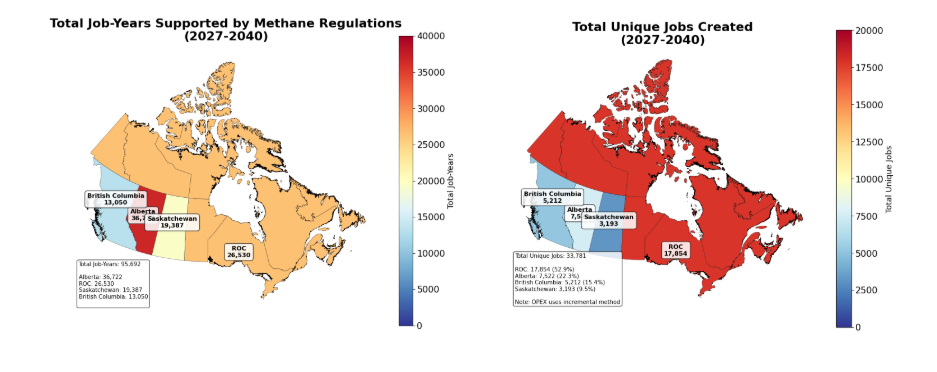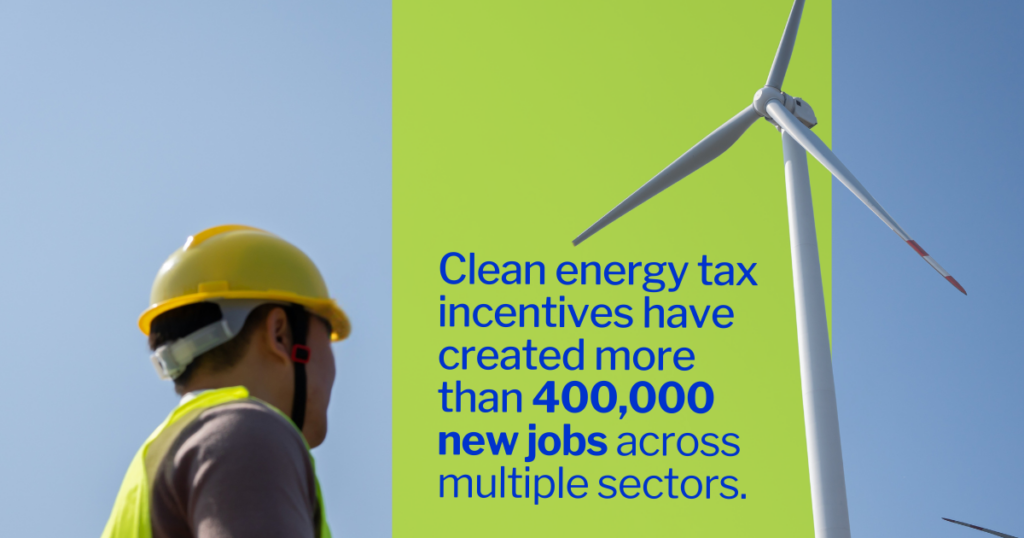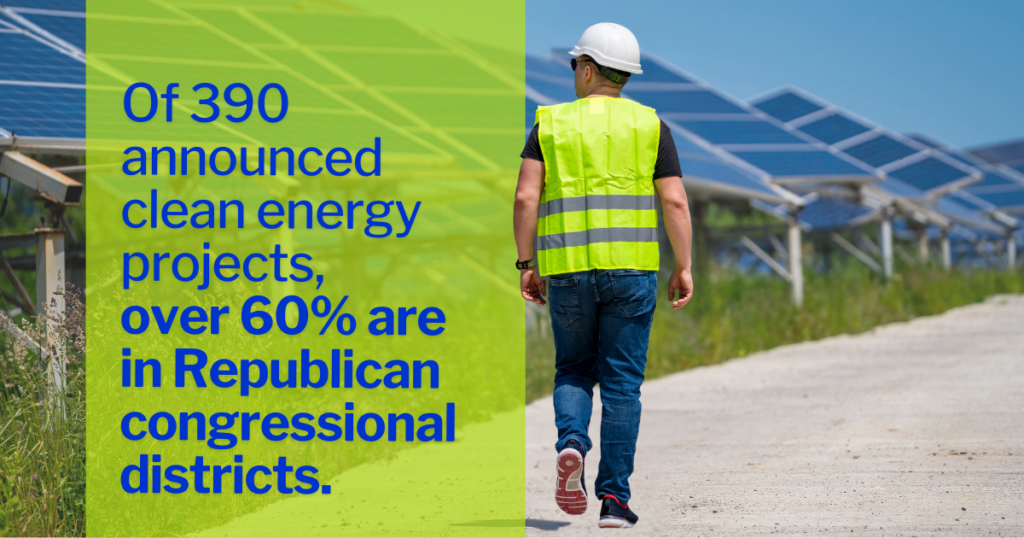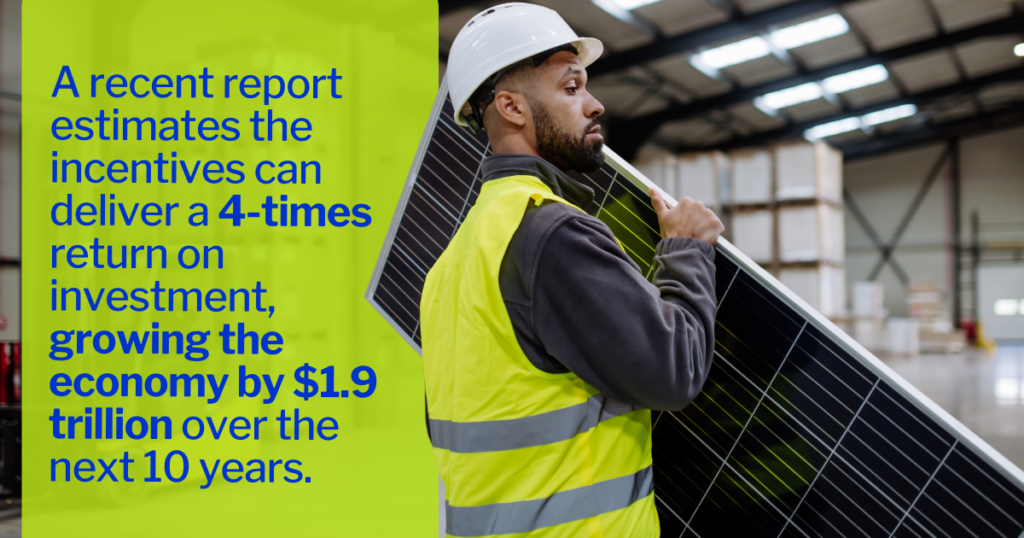This post by Environmental Defense Fund economist Luis Fernández Intriago; Senior Campaign Manager, Canada, Ari Pottens; Senior Manager of Economics and Policy Analysis, Maureen Lackner; and former EDF intern, Chi Chia (Gina) Chen.
- Canada has a methane problem, but solving it with smart national regulations could create around 34,000 jobs and recover billions in revenue.
- The job growth would support lower-emissions energy production in the west and manufacturing in the east, helping to conserve a valuable economic commodity – natural gas – while offering economic growth throughout the nation.
Canada’s oil and gas sector has a methane problem. The best available data suggests that the industry emitted 1.9 million metric tons of methane gas in 2023. While it only lasts in the atmosphere for a short period, this powerful greenhouse gas contributes 84 times more to near-term warming than CO2. Scientists estimate that nearly 30% of the warming experienced today can be attributed to methane from human activity.
It’s not just a climate problem either: because methane is the primary component of natural gas, methane emissions also result in the loss of a valuable energy resource. An analysis by Environmental Defense Fund found that Alberta’s 2022 methane emissions translated to a waste of over $670 million in natural gas revenue and a loss of over $120 million in uncollected royalties and corporate taxes.
Preventing methane waste is good for Canada’s economy and good for Canada’s climate. Finalizing regulations to reduce these emissions should be included as a cornerstone in the government’s anticipated climate competitiveness strategy which will seek to capitalize on the economic benefits associated with climate change mitigation.
Canada’s proposed methane regulations could tackle methane emissions and create about 34,000 jobs.
The methane problem can be a methane opportunity, if the Canadian government continues taking steps to seize it. In 2021, Canada announced a goal to reduce oil and gas methane emissions 75% below 2012 levels by 2030. In 2023, Environment and Climate Change Canada (ECCC) proposed amendments to the existing federal methane regulation that would impose strict limits on venting and flaring, mandate the installation of low- or zero-emissions equipment, and require regular monitoring for unintended emissions leaks at new and existing facilities.
If implemented, ECCC projects that between 2027 and 2040 these rules would prevent the release of over 5 million metric tons of methane, conserving a valuable commodity that can generate revenue for producers. The rules would also prevent the release of 1.5 million metric tons of volatile organic compounds and smog-forming local air pollutants. The benefits don’t even stop with recovered gas, cleaner air and less climate pollution: we estimate that these regulations would also create approximately 34,000 total jobs, or 95,000 person-years of employment, across Canada.
Growing Canada’s economy, sustainably
Canada’s oil and gas industry is well-positioned to tackle Canada’s ambitious climate goal. The sector enjoyed record revenues in 2022 and 2023 and has potential to play a major role in meeting growing international demand for gas produced with minimal methane emissions. According to the Canadian Association of Petroleum Producers (CAPP), the industry contributed $71.4 billion CAD (3%) to Canada’s GDP in 2022, employs 450,000 workers directly and indirectly, and supports an additional 450,000 induced jobs.
The oil and gas industry’s efforts to limit harmful methane emissions could drive significant growth from Canada’s methane-mitigation sector. As identified in a recent report commissioned by EDF and the Pembina Institute, 81 manufacturing firms and 55 service firms provide oil and gas operators with the equipment and services needed to cut methane emissions. These firms have locations across Canada and offer high-quality, well-paying jobs.
Jobs from coast to coast to coast: A national economic opportunity
Our upcoming economic analysis reveals that finalizing Canada’s methane regulations would generate substantial employment nationwide.
ECCC’s proposed regulations mandate quarterly leak detection and repair (LDAR) inspections at high-risk sites and annual checks at lower-risk ones. Large emission sources would need repair within 24 hours and smaller ones within 90 days. The rules would also restrict intentional methane releases, generally prohibiting venting and requiring flaring only when capturing the gas is not feasible. Achieving compliance with these new standards will take a lot of labor and create a lot of employment across Canada.
These requirements create two main types of work. First, regulatory compliance demands on-site work, including installation, monitoring, and field services, which must take place at the oil and gas facilities themselves, concentrated in Canada’s energy-producing provinces, Alberta, Saskatchewan, and British Columbia. Second, it requires the purchase of new manufactured hardware (such as compressor vents and control devices), which are concentrated in Canada’s industrial heartland, primarily, in Ontario and Quebec (which make up the majority of our “Rest of Canada” or ROC economic region jobs).
Between 2027 and 2040, our analysis of the approximately 34,000 total jobs or 95,000 person-years of employment shows this national split:
- Installation and field operations (~16,300 unique jobs or ~70,700 person-years): Equipment installation, leak detection and repair services, ongoing monitoring, and operations at oil and gas facilities in Alberta, Saskatchewan, and British Columbia.
- Manufacturing and specialized services (~17,500 unique jobs or~25,000, person-years): Most of the equipment manufacturing would be in ROC producing compressors, vapor recovery units, pneumatic devices, and monitoring systems required for compliance. Engineering firms and technology companies provide specialized services both remotely and on-site.
This distribution reflects existing industrial supply chains: equipment is manufactured where manufacturing capacity exists, while installation and operations occur at the facility.
How $15.4 Billion in Compliance Spending Creates Jobs
Our analysis is a detailed, bottom-up approach. We followed ECCC’s Regulatory Impact Analysis Statement (RIAS) and modeled how the estimated cost for industry to comply with the regulations would be spent year by year from 2027 to 2040.
Our total jobs estimate represents the number of unique positions that would be created across Canada between 2027-2040 to fulfill the requirements under the regulations. In contrast, person-years refers to the amount of work a person will contribute in one year to support compliance with the regulations. This means that 14 person-years of employment could translate to a single person in the same job working over the 2027-2040 period. Estimates for both total jobs and person-years of employment include direct, indirect, and induced jobs.
Employment estimates are based on economic input-output analysis using Statistics Canada multipliers and compliance cost data from the RIAS. The analysis accounts for capital and operating expenditures associated with mitigation efforts across nine emission source categories and across four regions (Alberta, British Columbia, Saskatchewan, and the Rest of Canada (ROC)). Then we allocate capital and operational costs to the appropriate Statistics Canada Business Sector (BS) Industries. Finally, we apply the input-output multipliers to the industries and location-specific costs.
Manufacturing employment is allocated based on Statistics Canada BS 333200 (Industrial Machinery Manufacturing) employment distribution, which shows 83% of Canada’s industrial machinery manufacturing capacity is in the Rest of Canada (primarily Ontario and Quebec), 13% in British Columbia, and 4% in Alberta and Saskatchewan. Field service employment is allocated based on the facility locations where on-site work must be performed.
Applying input-output multipliers to the full annual flow of expenditures estimated in the ECCC RIAS yields an aggregated person-years employment estimate of approximately 95,000. As noted above, this should be interpreted as the sum of full-time positions the regulations will require in each year.
In contrast, our estimate of 34,000 total jobs created by the regulations reflects unique positions created and is based on two assumptions. First, we assume that jobs required to carry out field operations will be filled, primarily, in 2030, the first year the new standards will activate, and that operating costs in subsequent years will not generate additional jobs. Second, we assume only 70% of workers are new hires rather than internal reassignments.
Methane Mitigation: A win for the Climate and a win for the Economy
Tackling the methane problem is one of the fastest, cheapest ways to slow the rate of warming, and supports the growth of Canada’s economy. The government has an opportunity to grab both of those benefits and make Canada a worldwide leader in methane mitigation.
Previous EDF reports and analyses have demonstrated that the proposed regulations are affordable, that they will generate revenue for provinces, and that they will strengthen a new sector of the economy, the methane mitigation industry.
This analysis proves something we’ve suspected for a long time: Canada’s proposed regulations are a clear win for Canadian jobs in the energy-producing West and the industrial East. These jobs are financed through private-sector compliance expenditures rather than public funding, meaning they redistribute oil and gas industry revenues to employment across multiple economic sectors, including oil and gas itself, manufacturing, engineering services, and technical consulting.
With 34,000 jobs at stake, billions in potential revenue recovered, and the opportunity to position Canadian energy as among the cleanest in the world, finalizing the methane regulations isn’t just the right thing to do on climate, it’s the smart thing to do for the economy.













